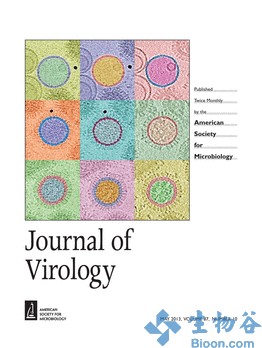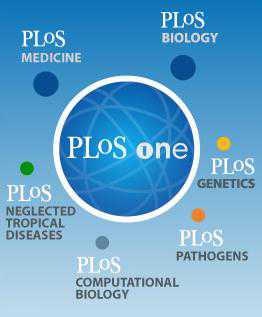BMC Medical Genomics:逆转艾滋病病毒易感性机制获发现
2013-07-27 张雯雯 张刚强 王超 中国科学报
近日,中科院昆明动物所的科研人员发现能够逆转艾滋病病毒-1型(HIV-1)易感性的主要靶细胞的分子机制。该研究成果发表在《BMC医学遗传学》和《国际免疫学杂志》上。该成果获得了国家自然科学基金、云南省重点项目和中科院“百人计划”的资助。 据介绍,自1981年首次发现HIV以来,虽然历经30多年的研究,但在HIV-1导致免疫缺陷的细胞和分子机理中,仍有许多关键问题不清楚。CD4+T细胞是HIV-1
近日,中科院昆明动物所的科研人员发现能够逆转艾滋病病毒-1型(HIV-1)易感性的主要靶细胞的分子机制。该研究成果发表在《BMC医学遗传学》和《国际免疫学杂志》上。该成果获得了国家自然科学基金、云南省重点项目和中科院“百人计划”的资助。
据介绍,自1981年首次发现HIV以来,虽然历经30多年的研究,但在HIV-1导致免疫缺陷的细胞和分子机理中,仍有许多关键问题不清楚。CD4+T细胞是HIV-1的主要靶细胞,在自然感染过程和通常的体外实验中,该细胞的活化和增殖是HIV-1得以大量复制的先决条件。
1996年,科学家意外发现,经过CD3/CD28抗体协同刺激后,活化的CD4+T细胞能够逆转对HIV-1的易感性。易感性是由遗传基础所决定的相同环境下不同个体患病的风险。但目前,尚不清楚这一现象所包含的调控规律和分子机制。
在该所研究员张华堂的指导下,博士研究生徐雯雯、韩妙君等采用生物芯片技术,对能够逆转HIV-1易感性的CD4+T细胞进行了全基因组分析,从中发现了产生逆转效应的信使核糖核酸(mRNA)表达谱特征。
在对数据进一步展开深入发掘和系统分析后,科研人员发现了137个核心基因在共表达网络中能够调控其他基因的表达,进而影响细胞内与细胞骨架、细胞周期和蛋白酶体等功能相关的基因的表达,最终导致逆转效应的发生。
该结果为HIV-1易感性研究提供了新思路,或将有助于进一步的临床生物标记研究。
生物谷推荐英文摘要阅读
BMC Medical Genomics 2013, 6:15 doi:10.1186/1755-8794-6-15
Genome-wide search for the genes accountable for the induced resistance to HIV-1 infection in activated CD4+ T cells: apparent transcriptional signatures, co-expression networks and possible cellular processes
Background
Upon co-stimulation with CD3/CD28 antibodies, activated CD4?+?T cells were found to lose their susceptibility to HIV-1 infection, exhibiting an induced resistant phenotype. This rather unexpected phenomenon has been repeatedly confirmed but the underlying cell and molecular mechanisms are still unknown.
Methods
We first replicated the reported system using the specified Dynal beads with PHA/IL-2-stimulated and un-stimulated cells as controls. Genome-wide expression and analysis were then performed by using Agilent whole genome microarrays and established bioinformatics tools.
Results
We showed that following CD3/CD28 co-stimulation, a homogeneous population emerged with uniform expression of activation markers CD25 and CD69 as well as a memory marker CD45RO at high levels. These cells differentially expressed 7,824 genes when compared with the controls on microarrays. Series-Cluster analysis identified 6 distinct expression profiles containing 1,345 genes as the representative signatures in the permissive and resistant cells. Of them, 245 (101 potentially permissive and 144 potentially resistant) were significant in gene ontology categories related to immune response, cell adhesion and metabolism. Co-expression networks analysis identified 137 “key regulatory” genes (84 potentially permissive and 53 potentially resistant), holding hub positions in the gene interactions. By mapping these genes on KEGG pathways, the predominance of actin cytoskeleton functions, proteasomes, and cell cycle arrest in induced resistance emerged. We also revealed an entire set of previously unreported novel genes for further mining and functional validation.
Conclusions
This initial microarray study will stimulate renewed interest in exploring this system and open new avenues for research into HIV-1 susceptibility and its reversal in target cells, serving as a foundation for the development of novel therapeutic and clinical treatments.
本网站所有内容来源注明为“梅斯医学”或“MedSci原创”的文字、图片和音视频资料,版权均属于梅斯医学所有。非经授权,任何媒体、网站或个人不得转载,授权转载时须注明来源为“梅斯医学”。其它来源的文章系转载文章,或“梅斯号”自媒体发布的文章,仅系出于传递更多信息之目的,本站仅负责审核内容合规,其内容不代表本站立场,本站不负责内容的准确性和版权。如果存在侵权、或不希望被转载的媒体或个人可与我们联系,我们将立即进行删除处理。
在此留言












#DIC#
60
#BMC#
71
#genomics#
56
#易感性#
72
#Medical#
59
#艾滋病病毒#
0
#Med#
60